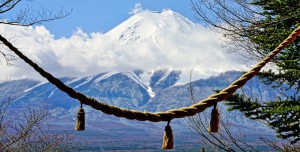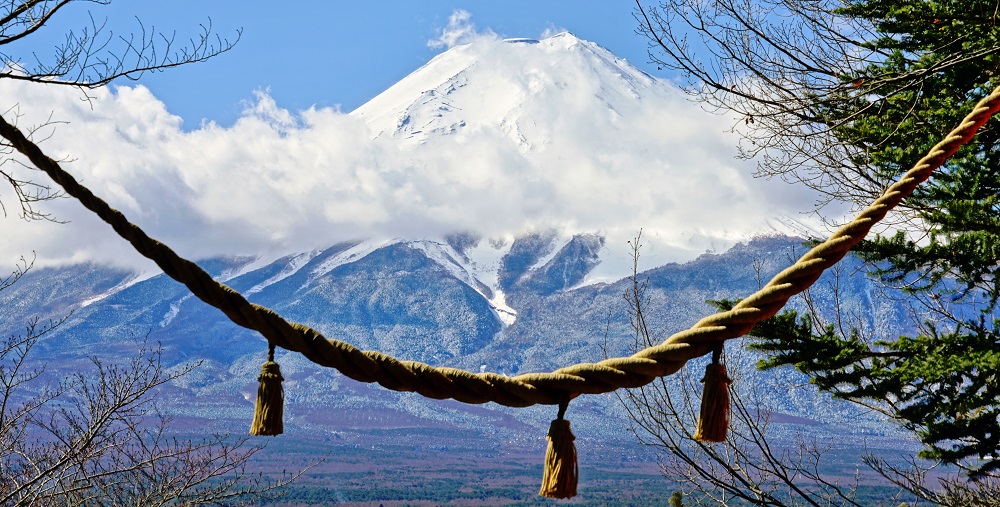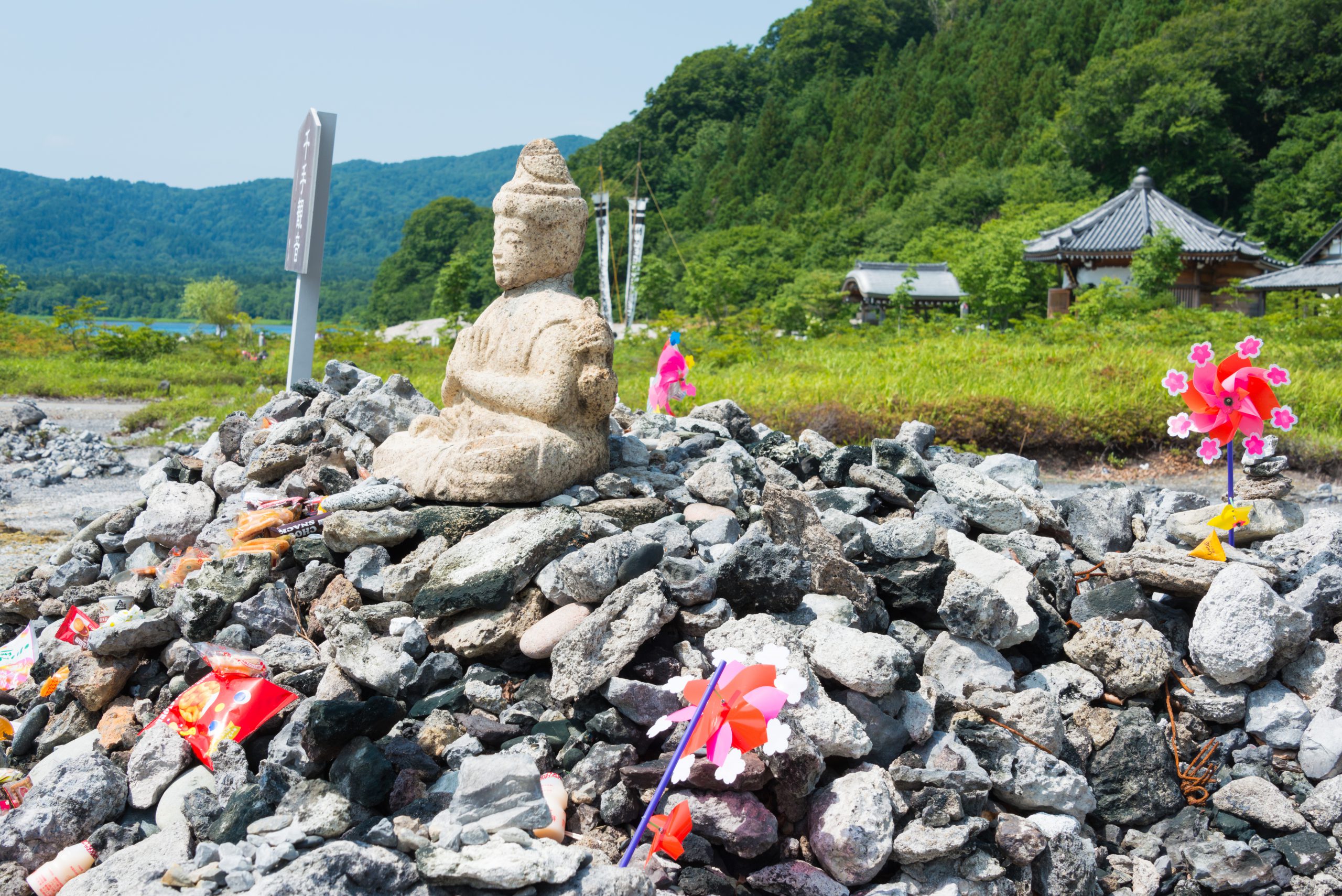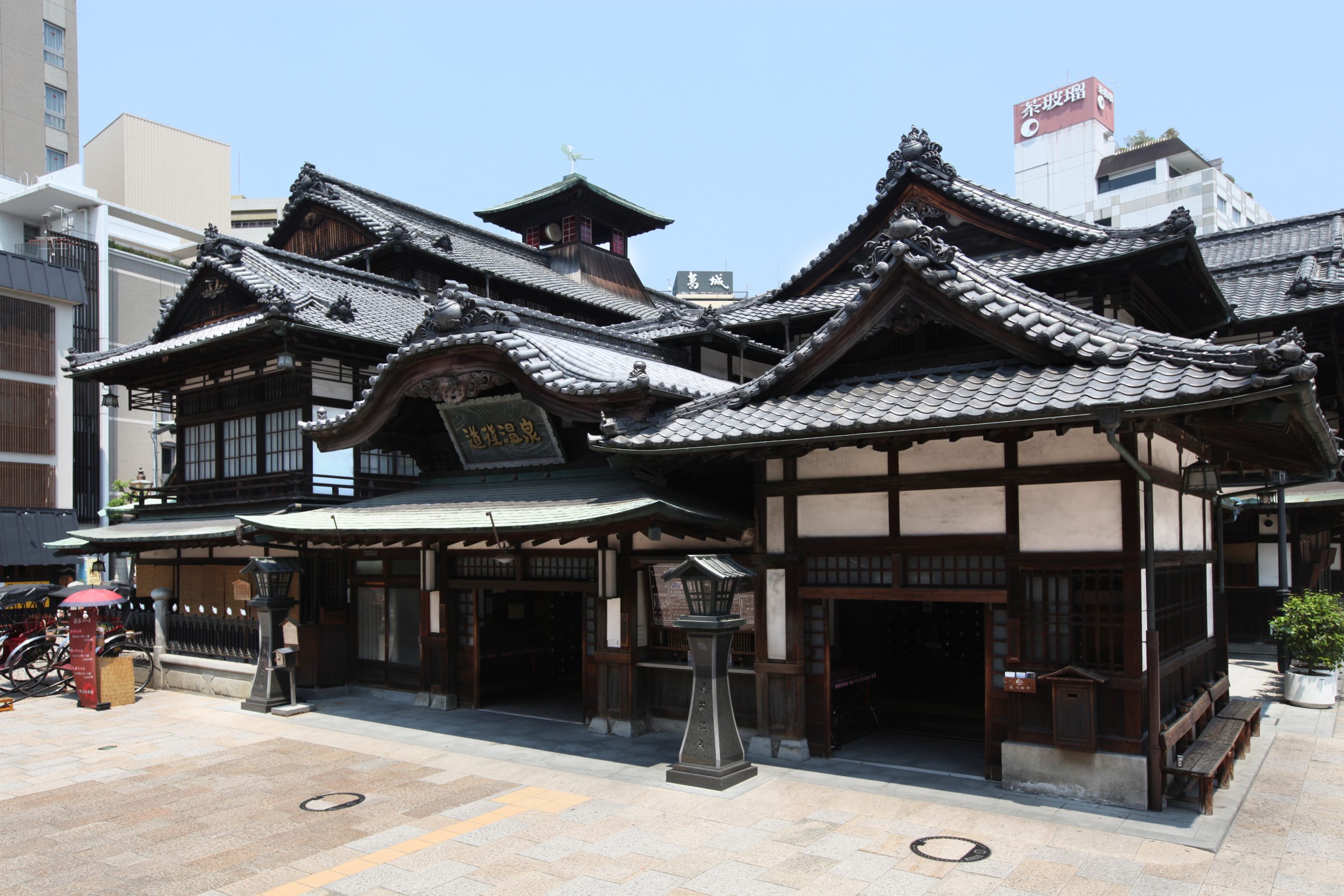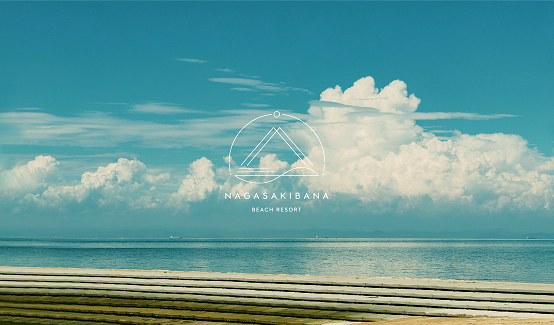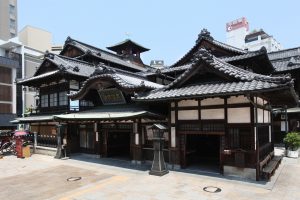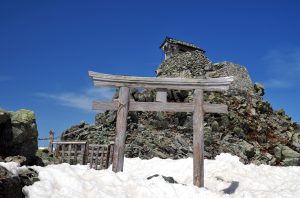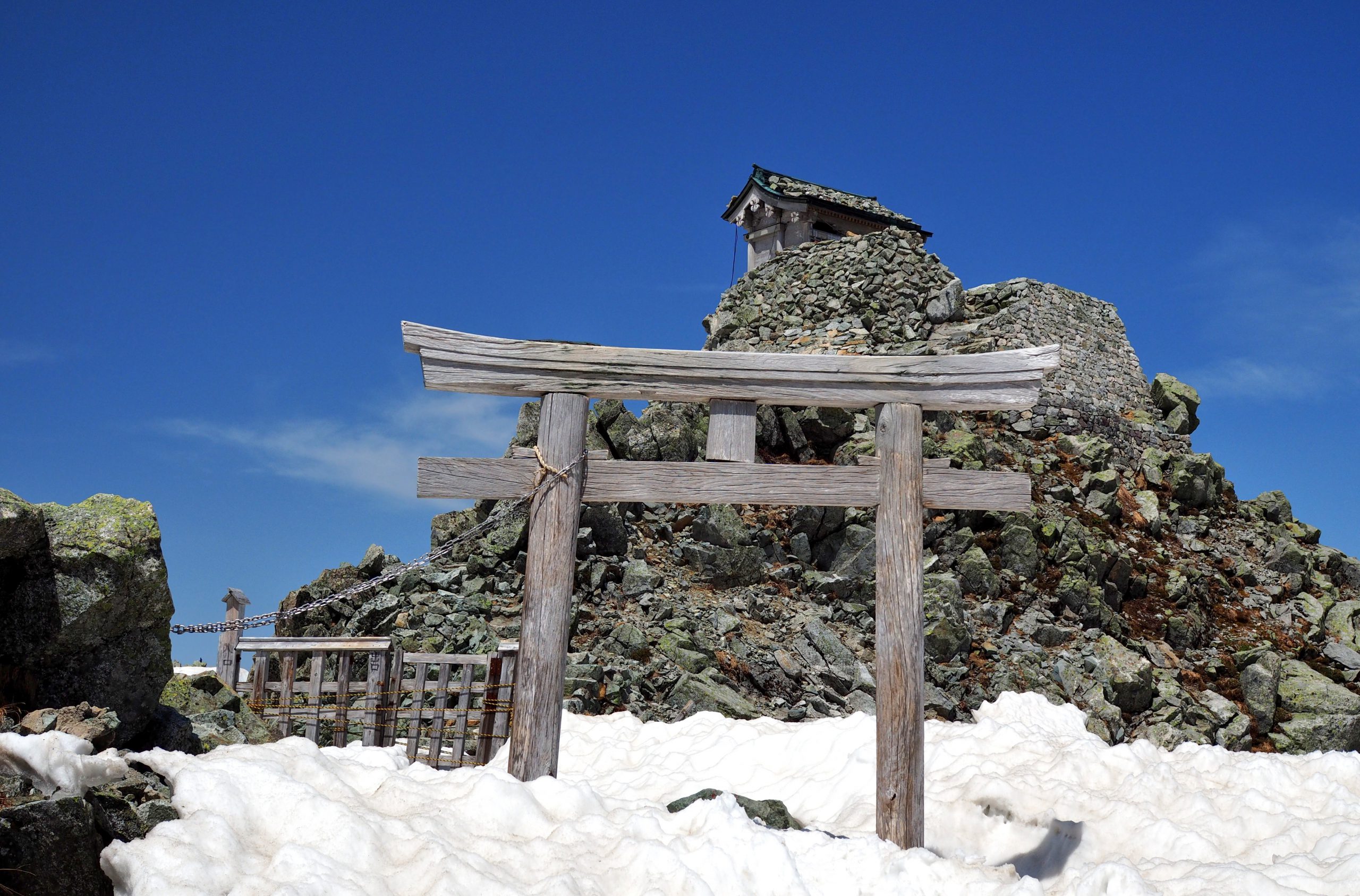
©Michio ISHIKAWA Oyama shrine at the top of Tateyama
by Michio Ishikawa
"The Hell of Tateyama is now called “Jigokudani” (the Valley of Hell), and this is the highest place in Japan where hot springs can be found (altitude 2300 m).
As the surroundings of the springs are dangerous because of the boiling water and the toxic gases.
Today, tourists come to this region of the Hell of Tateyama, in which the souls of the dead were said to gather in ancient times, in order to relax in sulfur waters
while enjoying the view of the 3000 m high summits covered with snow".
If Japanese people developed from the ancient times a specific faith towards nature and hot springs, the “cult of mountains”, Sangaku-shinkō, is also something very important. It had a strong influence on the development of onsen. And when Buddhism arrived in Japan in the 6th century, it also strongly influenced this cult of mountains.
Satoyama, these half-cultivated zones located at the periphery of villages, progressively became part of the daily life of people, providing them with fire wood, food, etc. People arranged places of worship, building at the entrance small shrines surrounded by a sacred grove. On the other hand, mountains with abundant water resources, volcanoes, elegant peaks and massive boulders inspired feelings of respect and fear, and they were visited by adepts of ascetic practices (sanrin shūgyōsha). If Mount Fuji was added to the world heritage list of Unesco, it is because, in addition to its beauty as a mountain, the culture and history of the “cult of Mt Fuji”, which is practiced in Fuji-jinja (Fuji shrines) throughout the country, have been highly evaluated. These mountains were inhabited by a “god of mountain” (Yama-no-kami) and volcanoes by a “god of fire” (Hi-no-kami), and people venturing into them had to respect a number of prohibited behaviors.
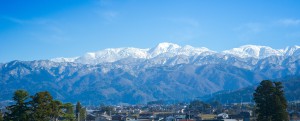
Mont. Tateyama in the northern Alps in Japan
What is interesting as an element related to the vision of life and death of Japanese people is that mountains have always been considered as places where the souls of dead people rise after death. Deep mountains were considered as “The other world”. Mt Tateyama (Chūbu region, altitude about 3000 m), Mt Osore-zan and Mt Gassan (Tōhoku region), only to mention them, are known as mountains where the souls of the dead gather. But they all have natural hot springs on their grounds, and we can see that the relation is strong.
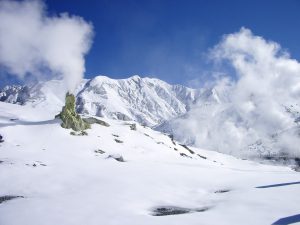
©Michio ISHIKAWA Fumerolle in Tateyama Hell Valley
In the book Konjaku Monogatari-shū (Collection of tales of today and yesterday), completed about 900 years ago, at the end of the Heian period, there is a story about “Tateyama in the Etchū region” (today Toyama Prefecture). It is said: “In Tateyama, there is a valley in which a lot of hot springs can be found. Boiling water spurts out of deep holes and between rocks, and people cannot get close”. This is the “Hell of Tateyama”, a place where hot water spurts out from the ground. It is also written: “Since ancient times, most of the people having committed sins fall into the Hell of Tateyama”.

©Michio ISHIKAWA Tateyama Hell Valley
There is in Japan a large number of hot springs of volcanic origin and at very high temperature, and the spurting of water can be rough. It is easy to imagine that this spectacle of boiling water and steam containing toxic gases coming out the bellows of the earth superimposed itself with the image of the Flames of Hell.
The book Konjaku Monogatari-shū, mentioned above, also presents the story of people who, thinking that defunct family members should be suffering after having fallen into the Hell of Tateyama, went to the mountain along with Buddhist monks. When the monks organized a service for the ancestors at the foot of the mountain, dead people were relieved from their sufferings, according to the story.
The Hell of Tateyama is now called “Jigokudani” (the Valley of Hell), and this is the highest place in Japan where hot springs can be found (altitude 2300 m). As the surroundings of the springs are dangerous because of the boiling water and the toxic gases, hot water has been drawn to the mountain lodges and accomodations located nearby. Today, tourists come to this region of the Hell of Tateyama, in which the souls of the dead were said to gather in ancient times, in order to relax in sulfur waters while enjoying the view of the 3000 m high summits covered with snow.
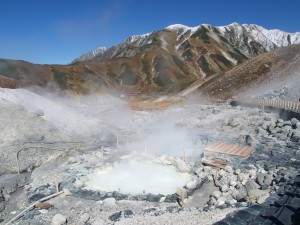
©Michio ISHIKAWA Tateyama Onsen (Hot Spring)
Hot spring data:
- type: sulphur water (hydrogen sulfide)
- temperature : 54°C

